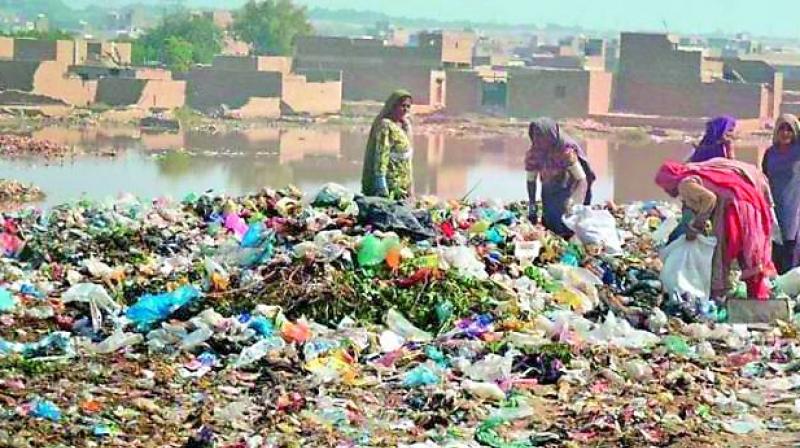What nations are doing to stem flow

The annual per capita plastic consumption in Western Europe is reported to be 100 kg while Asia consumes only around 20 kg per capita. The latter figure is expected to grow in future as Asia experiences rapid economic growth. In terms of plastic production, Asia produced 45.6 per cent in 2013, according to PlasticsEurope. A 2015 report by McKinsey Centre for Business and Environment said the majority of plastic enters the ocean from a small geographic area, and that over half comes from just five rapidly growing economies—China, Indonesia, the Philippines, Thailand, and Vietnam. These countries have recently benefited from significant increases in GDP, reduced poverty, and improved quality of life. However, increasing economic power has also generated exploding demand for consumer products that has not yet been met with a commensurate waste-management infrastructure.
Coordinated action in just these five countries could significantly reduce the global leakage of plastic waste into the ocean by 2025. Specifically, interventions in these five countries could reduce global plastic-waste leakage by approximately 45 per cent over the next 10 years. Of course, extending these interventions to other countries could have even more impact.
Suggested actions that can have a deep impact:
Minimise single-use plastic packaging and find sustainable alternative materials which can be used for longer duration before it gets into the waste stream and can be easily recovered and treated.
Make brand-owners who package and sell products responsible for the environmentally sound management of the packaging at the end of its life.
Introduce incentives for the collection and recycling of plastic packaging to reduce the amount of waste produced and disposed: Beverage container deposit return systems are one successful example of such incentives.
Increase the value of plastics to incentivise plastic collection in countries where informal systems of waste picking and recycling prevail. As has happened with PET in various countries where high value recycling has resulted in more price for waste collected by the informal sector
Evolving and implementing the concept of Design for Recyclability (DfR) which would involve addressing the following issues:
Design and fabricating a product for easy dismantling after end of life (e.g. automobiles are required to be 90 pc recyclable in Europe at the end-of-life)
Promoting products with modular designs with longer life where different components can be replaced/changed as the need may be so that the product’s entry into the waste stream is delayed (e.g. Dell computers)
Controlling use of dyes and additives and look for non-hazardous substitutes
A concerted global action by all countries would be required on an urgent basis if substantial reduction in marine plastics is to be achieved.
(The author is Director, Environment and Waste Management Division, The Energy and Resources Institute)

